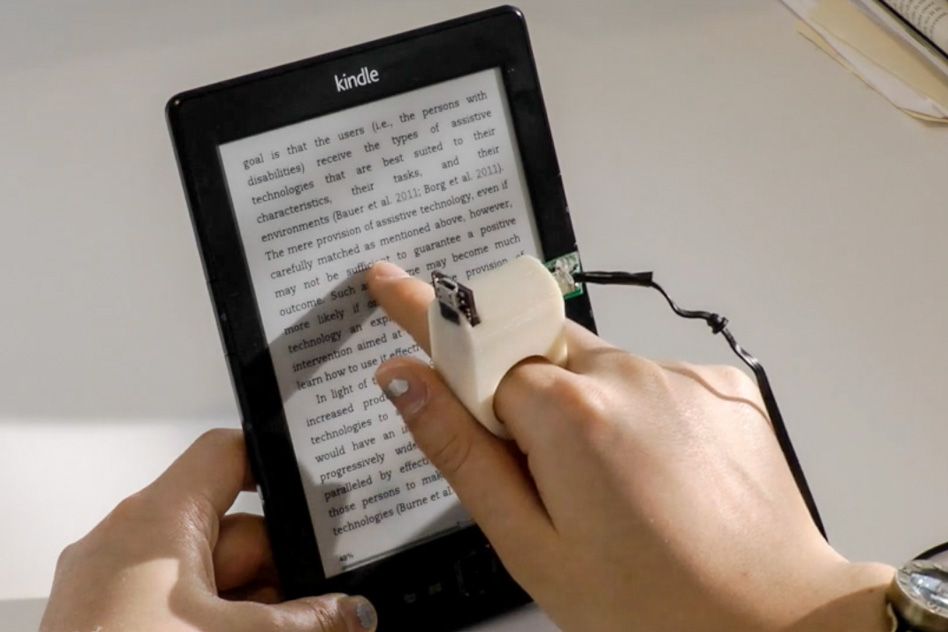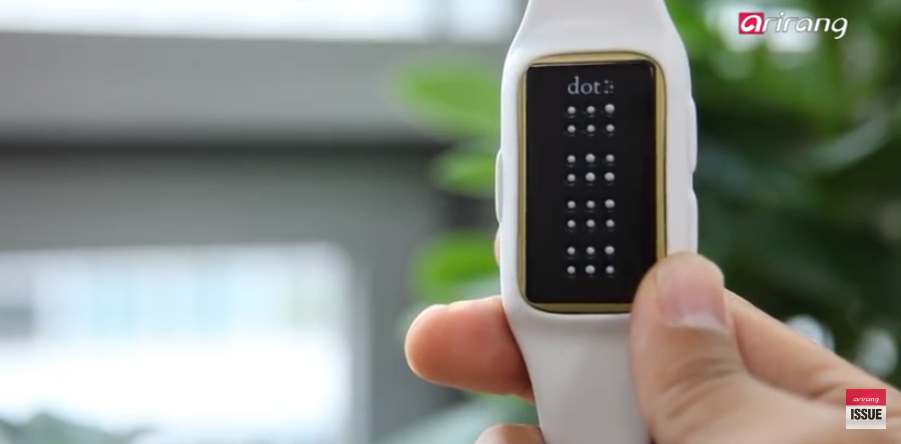Wearable Technology for Low Vision: Making Daily Life Easier
Wearable Technology for Low Vision: Making Daily Life Easier
Blog Article
Enhancing Lives With Advanced Assistive Devices for the Blind
The combination of sophisticated assistive tools for the blind is transforming how people experience their environments and interact with their areas. Advancements such as augmented truth clever glasses and sophisticated digital travel help not just assist in navigating but additionally enhance total lifestyle. These modern technologies cultivate a sense of freedom and self-efficacy among individuals, allowing them to embark on daily tasks with newfound confidence. The effects of these advancements extend beyond mere capability; they challenge social perceptions of special needs and freedom. What does this development indicate for the future of assistive innovation and its function in encouraging people?
Summary of Assistive Devices
Assistive devices for the blind incorporate a varied array of devices and technologies developed to improve self-reliance and improve the lifestyle for individuals with aesthetic impairments. These gadgets deal with numerous needs, from navigating and mobility to communication and day-to-day job administration.
One of the main categories of assistive tools includes flexibility aids, such as white walking canes and overview dogs, which help individuals navigate their surroundings securely. Digital travel help, geared up with sensors and audio responses, also play a considerable duty in mobility enhancement.
Furthermore, devices that assist with daily living activities, such as flexible kitchen devices, Braille tags, and chatting watches, encourage individuals to carry out tasks individually. Communication aids, including screen viewers and Braille display screens, assist in accessibility to details and allow people to involve successfully with the electronic globe.
Additionally, low-tech solutions like amplifying glasses and large-print products continue to be essential for several customers. Jointly, these assistive devices serve not only as useful tools but also as vital enablers of autonomy, promoting better involvement in a world that usually focuses on sighted experiences. Their integration right into day-to-day live is necessary for advertising inclusivity and enhancing overall health for those with aesthetic disabilities.
Innovative Technologies being used
Development in modern technology has actually dramatically changed the landscape of devices readily available for people with visual disabilities. Among one of the most notable advancements are clever glasses incorporated with augmented reality, which provide real-time navigating help and object acknowledgment. These devices leverage advanced electronic cameras and artificial intelligence to deliver auditory signs, boosting the customer's spatial understanding and freedom.
Furthermore, mobile applications have emerged as powerful sources, allowing users to determine money, read text out loud, and navigate strange settings via spoken directions. Devices such as Braille screens and refreshable Braille devices proceed to progress, offering smooth connection with mobile phones and computer systems, consequently boosting interaction and access to details.
Wearable modern technology, including smartwatches furnished with voice-activated functions, better empowers users by facilitating fast access to notices and alerts without calling for visual engagement. Responsive maps and 3D printing are also obtaining traction, offering concrete depictions of areas that aid in positioning and movement training.
Jointly, these innovative innovations not just improve the every day lives of aesthetically impaired people but also foster greater independence, inclusivity, and involvement with the broader community, consequently improving perceptions of ease of access. (AI-powered visual aids)
Individual Stories of Empowerment
Empowerment commonly arises from individual experiences that highlight the transformative effect of modern technology on people with aesthetic impairments. Take, for example, the story of Sarah, a young musician that regained her enthusiasm for paint via using a wise walking cane outfitted with obstacle discovery. This device not just promoted her flexibility but instilled a newly found confidence, allowing her to browse public rooms individually and pursue her creative ventures.

These narratives highlight the profound impacts that progressed assistive devices can carry day-to-day live. By allowing individuals to overcome barriers, technology fosters a sense of freedom and self-regard. Such empowerment tales offer as a testimony to the potential of advancement, showing how the right devices can significantly improve top quality of life and open doors to new opportunities for those with aesthetic problems.
Advantages of Advanced Solutions
The assimilation of innovative technology into assistive tools dramatically changes daily experiences for those impacted by vision loss. Speech-to-text devices for low vision. Devices such as clever walking canes geared up with sensing units, navigation apps, and wearable modern technology are developed to offer real-time comments, improving spatial understanding and lowering the risks linked with wheelchair.
In addition, advanced assistive modern technologies cultivate social inclusion by promoting interaction and communication. Voice-activated gadgets and applications enable individuals to gain access to info and involve with their environments separately, damaging obstacles that formerly prevented their participation in academic, expert, and social setups.
In addition, the personalization and flexibility of these solutions accommodate the varied needs of users, consequently boosting their overall quality of life. Enhanced capability, such as object recognition and text-to-speech capabilities, equips individuals with visual impairments to do tasks that they may have as soon as discovered testing. Eventually, advanced assistive innovations not only enhance freedom and safety and security yet additionally advertise self-respect and self-regard, allowing customers to lead fulfilling lives.
Future Patterns in Assistive Tech
As innovation continues to evolve, the landscape web of assistive tools for the blind is poised for impressive innovations that will further enhance access and freedom. Emerging trends in assistive modern technology show a change toward increased integration of expert system (AI) and maker discovering, allowing tools to adapt to individual user needs in real-time. These advancements are anticipated to help with more intuitive navigating systems that can determine obstacles and provide audio comments, considerably boosting outside movement.
In addition, the development of wearable technology, such as wise glasses geared up with enhanced reality, will permit individuals to get contextual information regarding their surroundings, thus enhancing their spatial awareness. Advancements in haptic modern technology promise to produce responsive feedback gadgets, permitting customers to perceive information with touch, boosting discovering and interaction with their environment.
Telecommunication developments are additionally leading the means for remote help remedies, where experienced specialists can supply guidance using video clip telephone calls, making sure support is easily easily accessible. As these fads unravel, the future of assistive devices for the blind will most certainly foster greater freedom, equipping people to browse their world with confidence and simplicity.

Verdict
The assimilation of advanced assistive gadgets for the blind stands for a significant development in cultivating independence and improving top quality of life. By using cutting-edge modern technologies, these devices equip customers to browse their settings with greater self-confidence and autonomy. As the area remains to advance, continuous r & d will likely produce much more advanced solutions, further changing the lived experiences of individuals with visual disabilities and promoting a higher sense of addition within culture.
The assimilation of sophisticated assistive devices for the blind is changing just how people experience their surroundings and communicate with their communities. The integration of innovative modern technology right into assistive tools considerably changes day-to-day experiences for those impacted by vision loss.As innovation proceeds to progress, the landscape of assistive gadgets for the blind is positioned for impressive innovations that will certainly additionally boost access and freedom. Arising fads in assistive modern technology show a change towards increased integration of man-made intelligence Homepage (AI) and machine knowing, enabling tools see this site to adjust to specific customer needs in real-time.The integration of innovative assistive gadgets for the blind represents a significant innovation in promoting self-reliance and enhancing quality of life.
Report this page